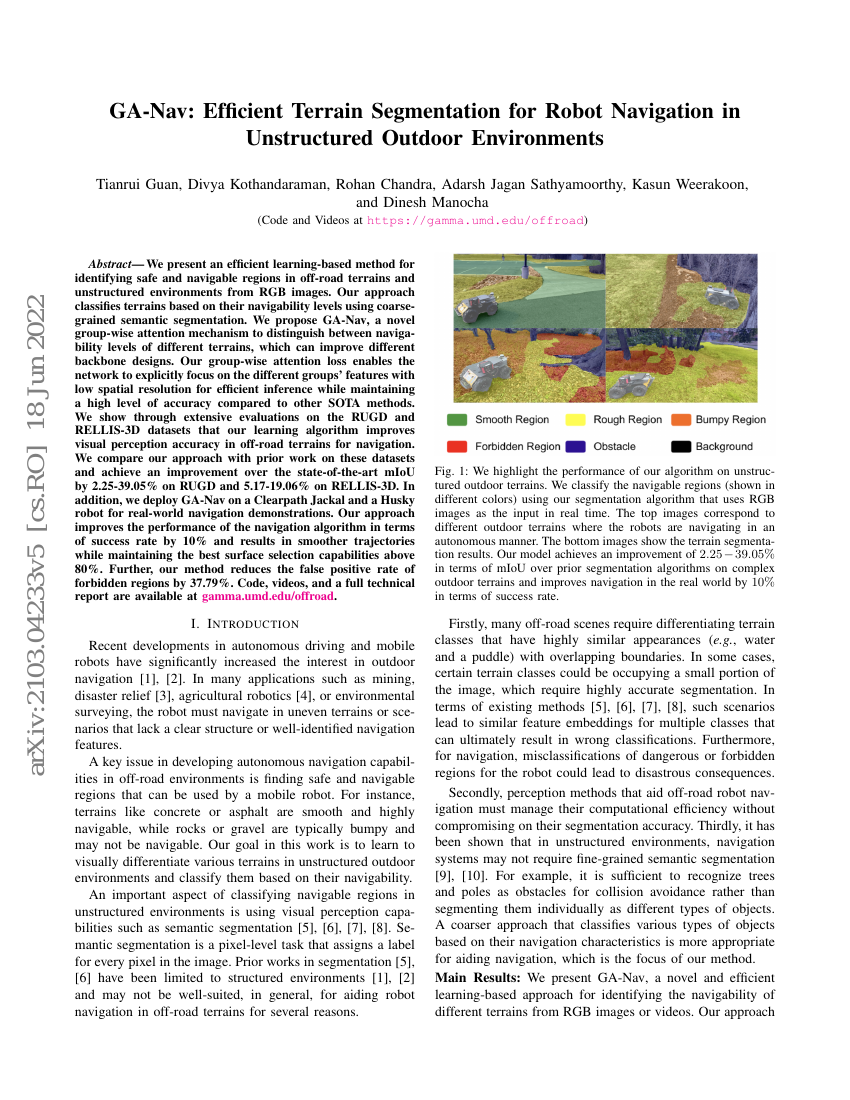Command Palette
Search for a command to run...
GANav: Efficient Terrain Segmentation for Robot Navigation in Unstructured Outdoor Environments
Tianrui Guan Divya Kothandaraman Rohan Chandra Adarsh Jagan Sathyamoorthy Kasun Weerakoon Dinesh Manocha

Abstract
We propose GANav, a novel group-wise attention mechanism to identify safe and navigable regions in off-road terrains and unstructured environments from RGB images. Our approach classifies terrains based on their navigability levels using coarse-grained semantic segmentation. Our novel group-wise attention loss enables any backbone network to explicitly focus on the different groups' features with low spatial resolution. Our design leads to efficient inference while maintaining a high level of accuracy compared to existing SOTA methods. Our extensive evaluations on the RUGD and RELLIS-3D datasets shows that GANav achieves an improvement over the SOTA mIoU by 2.25-39.05% on RUGD and 5.17-19.06% on RELLIS-3D. We interface GANav with a deep reinforcement learning-based navigation algorithm and highlight its benefits in terms of navigation in real-world unstructured terrains. We integrate our GANav-based navigation algorithm with ClearPath Jackal and Husky robots, and observe an increase of 10% in terms of success rate, 2-47% in terms of selecting the surface with the best navigability and a decrease of 4.6-13.9% in trajectory roughness. Further, GANav reduces the false positive rate of forbidden regions by 37.79%. Code, videos, and a full technical report are available at https://gamma.umd.edu/offroad/.
Code Repositories
Benchmarks
| Benchmark | Methodology | Metrics |
|---|---|---|
| semantic-segmentation-on-rellis-3d-dataset | GA-Nav | Mean IoU (class): 74.44 |
| semantic-segmentation-on-rugd | GA-Nav | AIOU: 95.66 mIoU: 89.08 |
Build AI with AI
From idea to launch — accelerate your AI development with free AI co-coding, out-of-the-box environment and best price of GPUs.